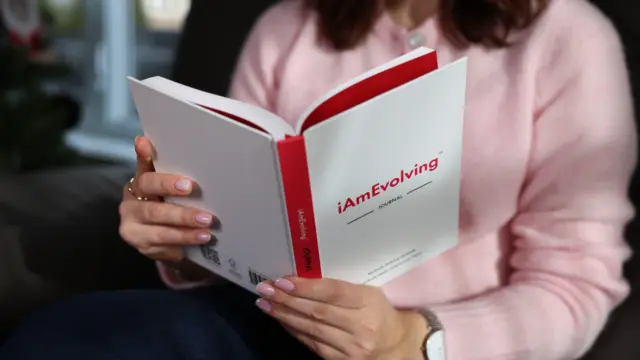Continue shopping
and explore our products below:
Letting Go: The Art of Releasing What No Longer Serves You

Why Letting Go Is So Hard
Read more on how to regain clarity before release in Journaling for Emotional Clarity.
Whether it’s a relationship, an expectation, or an identity you’ve outgrown, releasing what no longer serves you can feel like losing a part of yourself.
We hold on because it’s familiar. Even pain can feel safe when it’s known. The mind seeks comfort in patterns — in what once worked, even if it doesn’t anymore. But growth requires space, and space is created when we release what’s heavy.
Letting go is not forgetting or rejecting the past. It’s honoring it for what it taught you — and choosing to move forward lighter.
The Emotional Weight of Holding On
Emotional clutter can be as heavy as physical clutter. Old regrets, resentments, or “what ifs” can quietly drain your energy and limit your ability to feel joy — as explored in Finding Peace in the Present Moment.
You might notice this as:
- Feeling mentally stuck or replaying past moments
- Reacting emotionally to things that no longer matter
- Struggling to make new decisions with clarity
- Feeling anxious when things begin to change
These are signs your energy is tied to the past.
The act of letting go frees that energy — returning it to you.
Step 1: Accept What Is
The first step to letting go is radical acceptance.
Acceptance doesn’t mean approval. It means seeing reality as it is — without denial or resistance.
When you accept a situation, you stop wasting energy fighting the truth. You make peace with the present moment, creating the emotional clarity to decide what comes next.
Try writing:
This happened. I can’t change it,
but I can choose how I move forward.
That single acknowledgment shifts your energy from victimhood to empowerment.
Step 2: Feel Before You Release
True release can’t happen if you suppress emotions.
Pain, anger, disappointment — these emotions need to be felt, not ignored.
Allow yourself to feel what’s inside, without judgment or shame. Cry. Write. Move. Talk to someone who listens without fixing.
Emotions are energy, and energy moves when it’s expressed.
When you let emotions pass through, they lose control over you.
You stop carrying them as a burden and start transforming them into wisdom.
Step 3: Identify What You’re Actually Letting Go Of
Sometimes what you’re releasing isn’t the person or event itself — but the story attached to it.
You’re letting go of how you thought things should have been.
You’re letting go of needing closure from others.
You’re letting go of the version of you that existed before this change.
Ask yourself:
What exactly am I still holding on to?
What would it feel like to be free from this?
The answers often reveal what’s truly keeping you stuck — and what freedom really means for you now.
Step 4: Create Rituals of Release
Rituals help the mind and body mark emotional closure. You don’t have to do anything dramatic — just something meaningful.
- Write a letter to what you’re releasing and burn or bury it.
- Delete old files, messages, or photos that no longer bring peace.
- Take a walk in nature and consciously breathe out what feels heavy.
These small symbolic acts tell your subconscious: It’s okay to let go now.
Step 5: Fill the Space With Intention
When you release something, you create space — and that space needs new energy.
Otherwise, old patterns find their way back in.
Ask yourself:
What do I want to invite into my life now?
Maybe it’s peace. Maybe it’s new habits. Maybe it’s simply stillness.
Whatever it is, fill your inner space consciously — through gratitude, mindfulness, or new creative routines.
Letting go is not just about release; it’s about renewal.
Step 6: Practice Gentle Detachment
Detachment doesn’t mean you stop caring — it means you stop clinging.
You can still love deeply, remember warmly, and honor the past — without trying to control outcomes or replay old stories.
Detachment is the quiet confidence that life unfolds as it should. It’s choosing trust over fear, presence over control.
You allow yourself to evolve, without forcing the past to follow.
Step 7: Let Time Do Its Work
Some things take time to fade. You might revisit emotions you thought you had already released — that’s normal. Healing is not linear.
Each wave of emotion comes to clear another layer.
Be patient. The space you’re creating now will soon be filled with lightness and peace.
When You Finally Let Go
There’s a calm that comes when you stop gripping life so tightly.
Your body relaxes. Your thoughts soften. You start to feel the beauty of what is instead of the ache of what was.
Letting go doesn’t mean losing — it means freeing yourself to live more fully, love more openly, and trust more deeply.
Because when you stop holding on to what’s gone, you make space for what’s meant to come. Continue your journey with The Beauty of Change — a reflection on embracing life’s natural flow.
Journaling Prompt
Write about something that once meant a lot to you but now feels heavy to carry.
What lesson did it leave behind — and how can you honor it by finally setting it free?
Letting go is a quiet act of courage — it’s choosing peace over attachment and growth over familiarity. Each time you release what no longer serves you, you create space for clarity, lightness, and renewal. Continue exploring how emotional growth and resilience support this process in Emotional Growth & Resilience.
Not sure where to begin? Start with the iAmEvolving™ Guidebook to learn the method, then get the Journal when you're ready.


